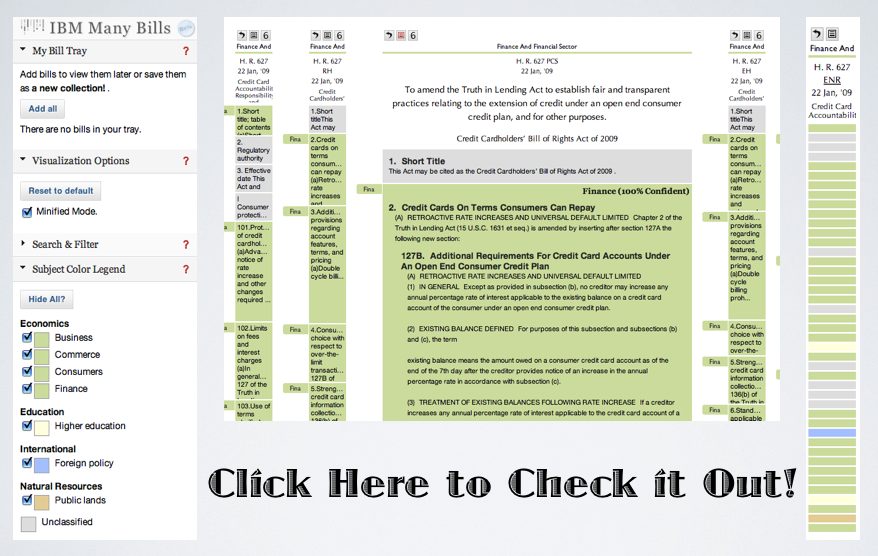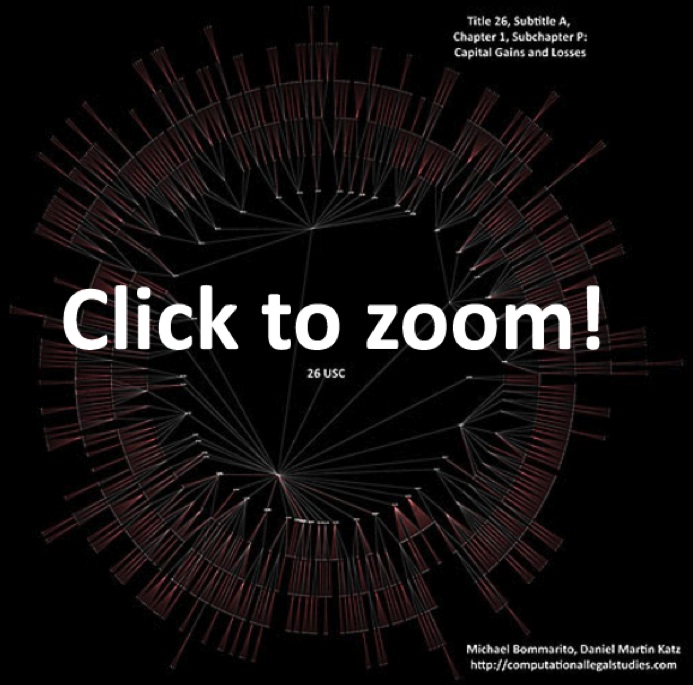The Pace of Evolution Across Fitness Valleys
From the abstract: “How fast does a population evolve from one fitness peak to another? We study the dynamics of evolving, asexually reproducing populations in which a certain number of mutations jointly confer a fitness advantage. We consider the time until a population has evolved from one fitness peak to another one with a higher fitness. The order of mutations can either be fixed or random. If the order of mutations is fixed, then the population follows a metaphorical ridge, a single path. If the order of mutations is arbitrary, then there are many ways to evolve to the higher fitness state. We address the time required for fixation in such scenarios and study how it is affected by the order of mutations, the population size, the fitness values and the mutation rate.”
SEAL 11 @ William & Mary Law School
This weekend we participated in the Society for Evolutionary Analysis in Law (SEAL) annual meeting at William & Mary Law School. For those not already familiar, SEAL is devoted to the integration of the life sciences and social sciences into legal scholarship and teaching. Relevant topics include but are not limited to evolutionary and behavioral biology, cognitive science, complex adaptive systems, economics, evolutionary psychology, primatology, etc. SEAL boasts over 400 members from 30 countries — including the 2009 Economics Nobelist Elinor Ostrom. Anyway, this weekend witnessed a very interesting and exciting set of presentations …. we are looking forward to more great presentations at SEAL 12.
What Computer Science Can Teach Economics …
Above is a link to a new release highlighting Constantinos Daskalakis and his important work. Together with Paul Goldberg and Christos Papadimitriou, Constantinos received the Game Theory and Computer Science Prize for his paper “The Complexity of Computing a Nash Equilibrium.” The prize is awarded once every four years at the World Congress of the Game Theory Society. A shorter and simpler version of the paper is available here.
The question of what computer science can teach social science disciplines such as economics is a constant discussion here at Michigan CSCS. I would say the consensus is that there exists real opportunities for meaningful cross-fertilization. For example, take the results presented in this paper. Now, consider a group of agents/players with ranges of different cognitive limitations and information sets playing all types of different games on a multi-dimensional graphs …. now imagine we did not assume the system in question had a fixed point attractor. Rather, assume we allowed for the possibility of a limit cycle attractor or even a strange attractor. Under such conditions, the richness of the problem might encourage one to put aside their pencil and paper and consider what computation might be able to bring to the problem ….
Data on the Legal Blogosphere [Via the Library of Congress]
From the LOC Website … “The Law Library of Congress began harvesting legal blawgs in 2007. The collection has grown to more than one hundred items covering a broad cross section of legal topics. Blawgs can also be retrieved by keywords or browsed by subject, name, or title.” To access our visualization of the legal blogosphere (pictured above) … please click here.
The MIT School of Law?

I have to admit that I got totally suckered by this April fools day post over at the Faculty Lounge. I did not carefully read all of the supporting details. So, (a) kudos for them for this great prank and (b) shame on me for skimming!
So I have been mulling it over a little bit … and although it was pitched as a joke … the MIT School of Law sounds like very interesting idea …
I guess part of why I was so willing to believe this post is because, in my estimation, it represented a good assessment of the state of the market for legal education. Namely, MIT School of Law seems like a plausible effort to capture and arguably better serve one particular subset of the market.
We live in the petabyte era and the impacts of the era of ‘big data’ are already remaking many sectors of the economy. It cannot be too long until the scope of available information fundamentally alters the market for legal services. Specifically, in terms of leveraging information technology to improve the quality and efficiency of legal services … my bet is on someone with an interest in attending the MIT Law School.
So, I know what you might be thinking… Isn’t it the case that lots of institutions offer courses and programs that would generally parallel those offered by MIT Law School? Well, yes.
However, I believe that an MIT law school would arguably differ from existing offerings in two important ways:
(1) Given a selective pool of students with prior technical training … the emphasis upon science and technology, etc. could be much more extensive. Indeed, one could imagine a legal curriculum that strongly emphasized science, technology, statistical training, mathematical and computational modeling, etc. There is a growing market for lawyers with this class of skills (but those jobs are currently in non-traditional places).
(2) Like in many other fields, a non-trivial amount of the substantive education is generated through peer-to-peer interaction outside of the classroom. A culture that was exclusively or nearly exclusively devoted to the integration of law, technology, applied math, computer science as well as the social and physical sciences could arguably do a better job of nurturing the development of a particular subset of the broader law student population.
I want to make sure it is clear that this post is not a general affront to state of American legal education. There are some serious issues in American legal education but I will leave this broader reform question to more qualified folks. Instead, this post is related to better serving a narrow slice of the market (i.e. law students with particular class of prior technical training).
Anyway, while this is probably not likely to come to pass … I still thought the idea was worthy of some sort of brief sketch … I mean if one thinks UC-Irvine has stormed the scene … seriously, think about what a MIT law school might be able to do!
Law.Gov Meeting @ Colorado Law School
Tomorow is the Law.gov meeting at Colorado Law School. I am looking forward to it. Thanks to Paul Ohm and Carl Malamud for organizing the event. I know that we will have a very meaningful discussion! For those interested, click on the image above and you will be directed to the agenda for the meeting.
United States Supreme Court’s New Website — Still Far Below the Mark
The United States Supreme Court has recently launched its newly redesigned website. Given the significant limitations associated with the prior website, this launch had been highly anticipated. Indeed, many had hoped for a website that would reflect well upon the Court. While we applaud the decision to move away from the prior design, a review of the Court’s new website reveals a product which still falls far below the mark.
One of the very disappointing aspects of the new interface is that it appears to have been created with little regard for the overtures offered by folks such as the Sunlight Foundation. Specifically, in an effort to improve the experience of end users, the Sunlight Foundation offered a very constructive mockup redesign for the website. Unfortunately, the current redesign does not reflect most of their ideas.
For those interested in additional thoughts on this matter, the good folks over at Law Librarian Blog offer a number of constructive suggestions for improvements. These include unlocking PDF documents by simultaneously making their content available in friendly formats such as XML / HTML. Anyway, we hope that this is merely one step in the direction of genuine improvement …. but given the current state of affairs … the path to a 21st century website for the United States Supreme Court looks to be quite long.
Visualizing a Subset of the Tax Code – Capital Gains & Losses at Full Depth [Repost]
In our original post on Title 26, we displayed every subtitle of Title 26, A through K, down to the section level. We did not, however, display the elements of the code below the section level. For example, our prior visualization stops at §501 and does not distinguish between §501(c)(3) and §501(c)(2). This is a function of the size of Title 26, as the full labeled image is too large to render and distribute over the Internet. However, working with only a subset of Title 26 of the United States Code, we can provide a full depth zoomable visualization.
We’ve chosen to highlight – Subtitle A, Chapter 1, Subchapter P: Capital Gains and Losses as this section well represents the structural complexity of the code. Despite only displaying a single subchapter without any Treasury Regs or SEC guidance, there are over 1,711 citable elements in this visual. If you look closely you can see the labels for each and every piece of this subchapter, including §1221(b)(2)(A)(ii), which defines “hedging transactions” (e.g., swaps) for the purpose of the tax code: “to manage risk of interest rate or price changes or currency fluctuations with respect to borrowings made or to be made, or ordinary obligations incurred or to be incurred, by the taxpayer.” For details on the coloring of this visual, see our previous post visualizing the Bankruptcy Code 11 U.S.C located here.
H.R. 4872 Word Cloud
With the passage of H.R. 4872 in the House last night, our previous research on the relative size of H.R. 3962 has been in high demand. While we are not yet prepared to run similar calculations for H.R. 4872, at first glance we can say – as passed, H.R. 4872 is marginally longer H.R. 3200 and nearly 20% longer than H.R. 3962.
We have created the word cloud below … it is mainly just for fun. However, one interesting thing that jumps out from the cloud is the prevalence of the word “secretary.” Indeed, this may indicate the legislation provides a non-trivial amount of discretion to the relevant various administrative agencies.











